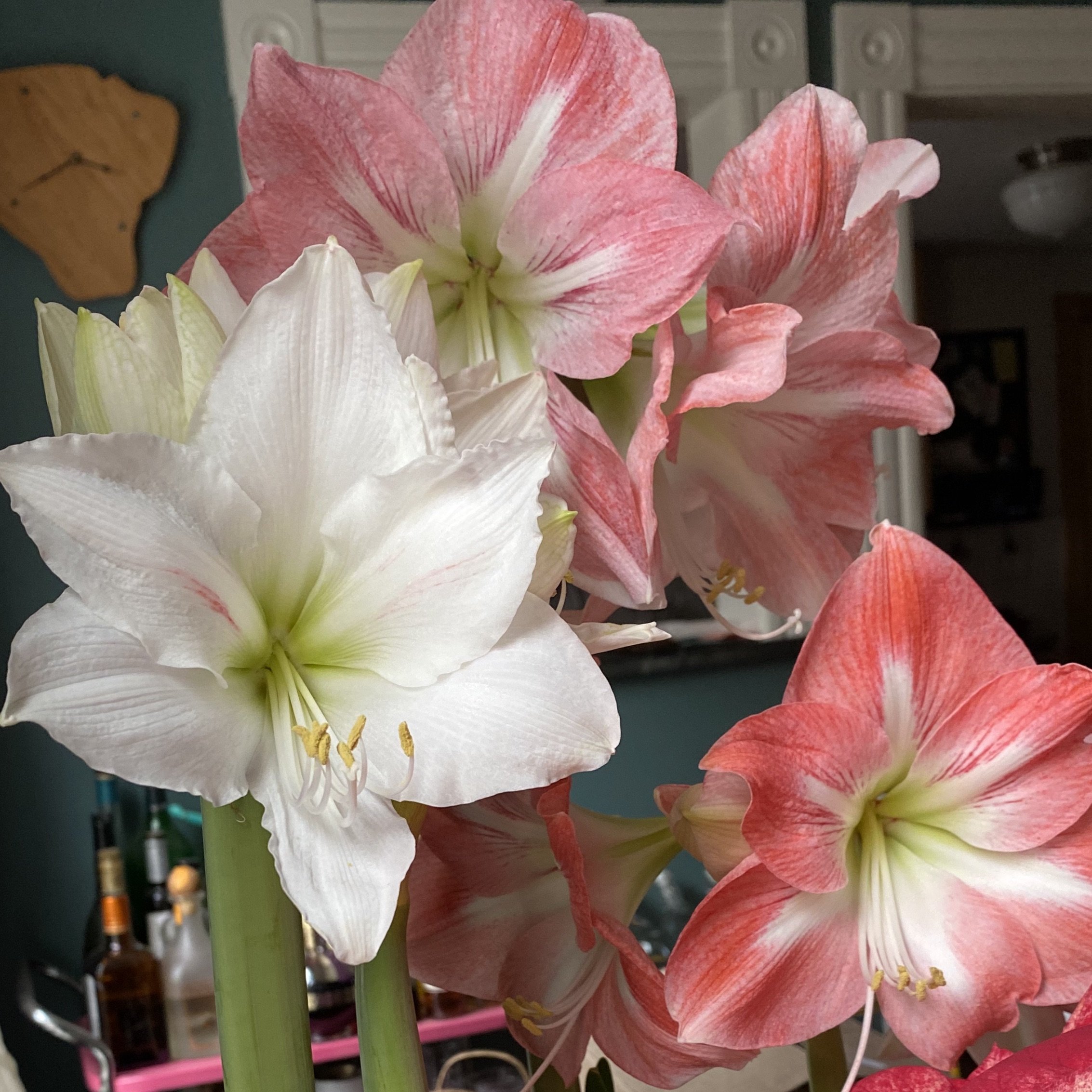How to Care for
Indoor Forced Bulbs
Indoor forced bulbs (IFB) prefer temperatures in the range of 60° to 70°F Keep them away from freezing windows and drying radiators.
Display the bulbs away from drafts in a bright room, but not in direct sunlight.
Water sparingly. Only water when the top inch of potting mix is dry, taking care not to get water on the neck of the bulb(s). I say between 7-10 days, dependent on the conditions of your space. Paperwhites tend to drink water faster and don’t mind being watered more often than Amaryllis
When the flower stalk appears, move the amaryllis into brighter location, but not in direct sunlight to allow your blooms to last longer and increase watering slightly.
Turn the pot every several days for even lighting and to prevent leaning. To prevent bending, add a stake or branch, tie a ribbon or string around the stems to keep them upright.
Once the bulbs are blooming, you can move it to a cooler location out of direct sunlight to make the blossoms last longer.
After the flowers have faded, cut them off to prevent seed formation. Pinch as flowers fade. Cut the stem off at the top of the bulb, but make sure the leaves are in tact.
If your bulb was grown in water, it is not guaranteed to re-bloom the following year. I have potted them into soil after all the blooms have faded and the foliage remains; I would say I’ve had a 50% success rates with water forced bulbs.
Grow the bulbs as a foliage plant through the spring and summer until the leaves turn yellow. Make sure to keep it watered. There are two options that we’ve been testing;
store the potted bulb on its side in a cool, dark room or basement to rest for 8 to 10 weeks; before/after Labor Day. You can replant in new soil, or keep in the same vessel; Amaryllis likes to be root bound
keep the plant as any other houseplant, watering normally throughout the year.
If you don’t want to go to the trouble of keeping your amaryllis alive, it can be composted, vessel cleansed, re-used or donated.







